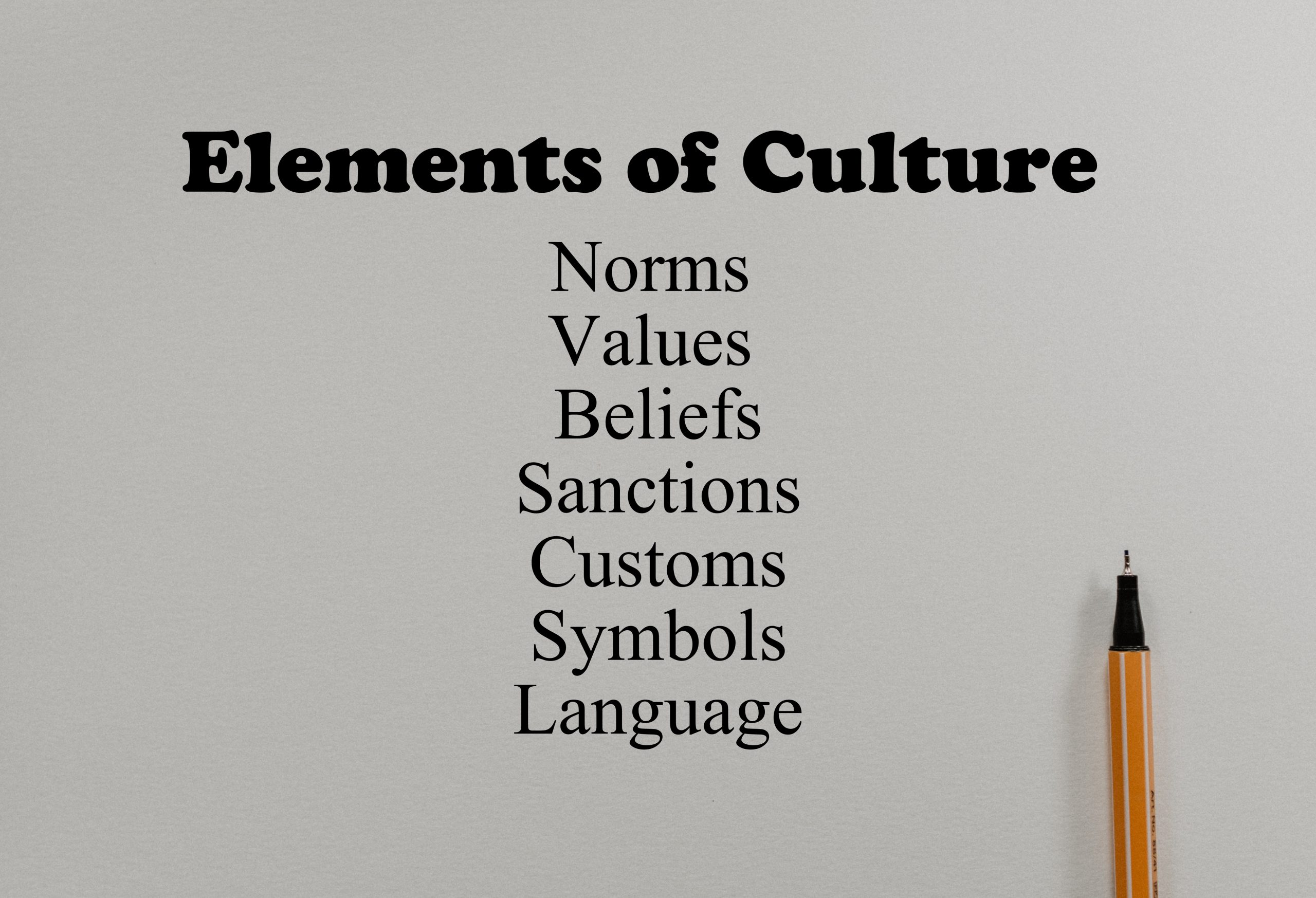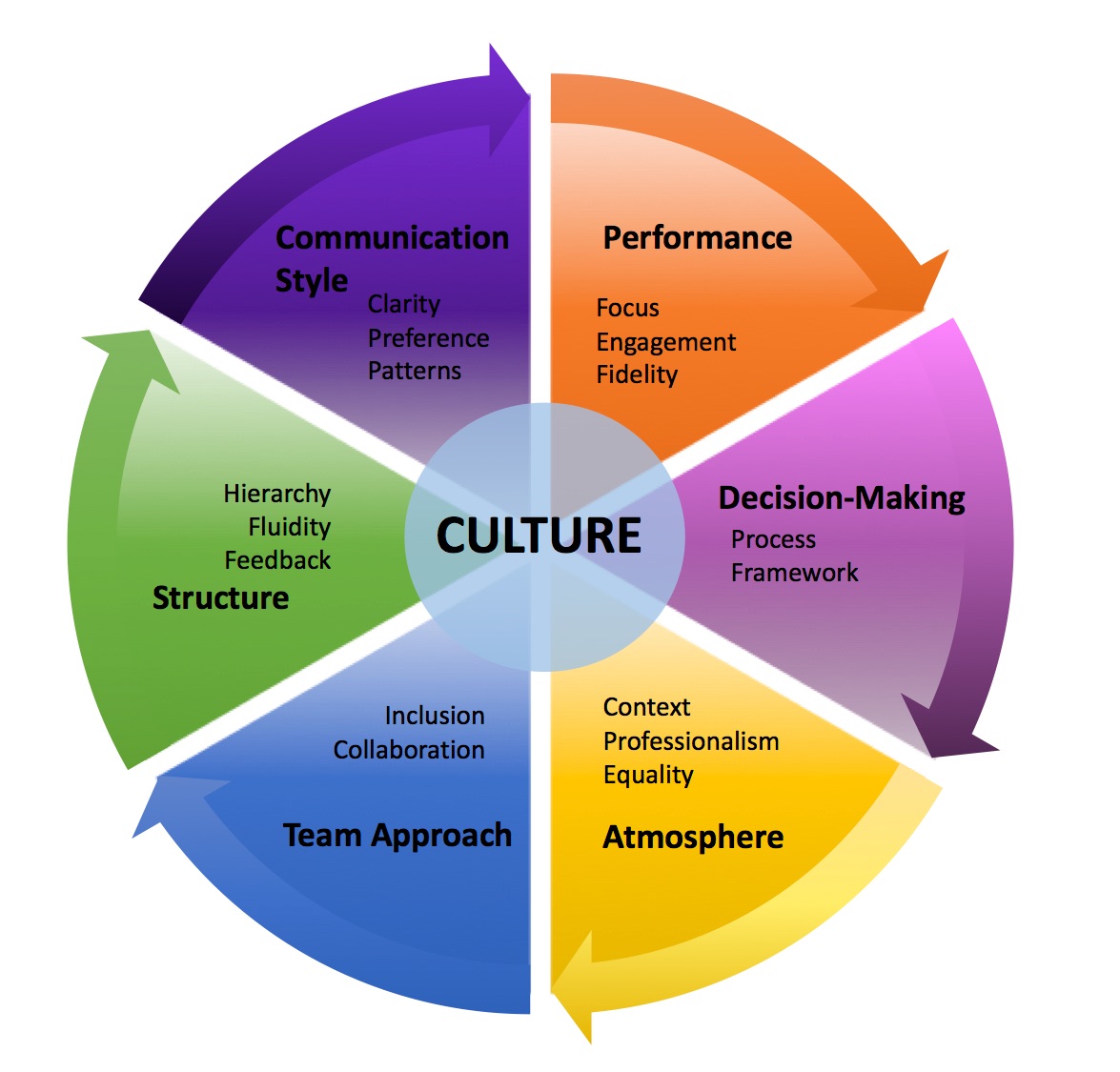Have you ever wondered why people from different parts of the world act, think, and believe in such diverse ways? This fascinating variation is shaped by the very fabric of their culture – a complex tapestry woven with threads of shared beliefs, values, customs, and traditions. But what are the key elements that create this rich and varied landscape? Delving into the fundamental elements of culture allows us to understand the diverse tapestry of human society and appreciate the intricacies of our own identities.

Image: www.scholarlywriteups.com
Culture, in its simplest form, is the shared way of life of a group of people. It encompasses everything from the food we eat to the music we listen to, the art we create to the stories we tell. Understanding the elements of culture is essential because it helps us navigate an increasingly interconnected world, fostering empathy, tolerance, and a deeper understanding of human experience.
Language: The Foundation of Shared Meaning
Language is the cornerstone of culture, acting as the primary vehicle for communication and the transmission of knowledge. It forms the basis of shared understanding within a community, allowing individuals to express their thoughts, emotions, and experiences. More than just words, language encompasses a complex system of sounds, gestures, and rules of grammar that shape cultural identity. Imagine the richness of a language like Japanese, with its honorifics that express social status, or the evocative power of poetry in Arabic, where metaphors and similes are used to create intricate webs of meaning. These linguistic nuances reflect profound cultural values and shape the way individuals interact with their world.
Values and Beliefs: The Guiding Principles
At the heart of any culture lie the values and beliefs that define its moral compass. These are the fundamental principles that shape judgments, influence behavior, and guide decision-making. Some cultures emphasize individual achievement and personal liberty, while others prioritize collective well-being and social harmony. For example, the emphasis on respect for elders in many Asian cultures reflects a strong value placed on family and tradition. Understanding these core values allows us to appreciate different perspectives and approach intercultural interactions with sensitivity.
Customs and Traditions: Rituals and Ceremonies
Customs and traditions are the time-honored practices and rituals that bind a community together. These ceremonies and celebrations often mark significant events in the lifecycle, such as birth, marriage, and death, or commemorate historical milestones. The way a community celebrates a holiday, observes religious practices, or conducts daily rituals reflects its unique cultural identity. For instance, the intricate ceremonies of a traditional Japanese tea ceremony demonstrate cultural values of harmony, discipline, and appreciation for aesthetic beauty. Such rituals not only solidify cultural identity, but also create a shared sense of belonging and history.

Image: mavink.com
Art and Literature: The Expressions of the Soul
Art and literature serve as the powerful mediums through which cultures express their emotions, beliefs, and worldviews. From the breathtaking landscapes of Chinese ink painting to the haunting melodies of Irish folk music, art forms provide a window into the soul of a culture. Literature, whether in the form of epic poems, historical novels, or contemporary plays, offers insights into the human condition, exploring universal themes of love, loss, redemption, and belonging. The stories we tell – from ancient myths to modern-day tales – shape our cultural narratives and preserve our collective memory.
Food: The Sustenance and Symbolism
Food is not just about nourishing the body, but also expresses a culture’s relationship with nature, tradition, and social interaction. The foods a people consume often reflect their geographic location, climate, and available resources. For instance, the spice-laden cuisine of India reflects the influence of its tropical climate, while the hearty stews of northern Europe are adapted to colder winters. Food also plays a significant role in cultural celebrations and gatherings, fostering a sense of community and shared experience. From the vibrant street food stalls of Thailand to the elegant dinner parties of France, the way a culture prepares, serves, and consumes food reveals its values and traditions.
Technology and Innovation: Shaping the Future
In an increasingly interconnected world, technology plays a pivotal role in shaping cultural evolution. Innovations in communication, transportation, and information technology have accelerated globalization and cultural exchange. The rise of social media platforms, for instance, has created new avenues for sharing ideas, experiences, and cultural expressions across geographical boundaries. While technology can lead to homogenization, it also provides opportunities for fostering cultural preservation and revitalization. The use of technology to document traditional arts, languages, and stories ensures their survival for future generations.
Fashion and Dress: Expressions of Identity
Clothing and fashion are powerful expressions of cultural identity, reflecting aesthetic preferences, social status, and religious beliefs. From the vibrant saris of India to the elegant kimonos of Japan, traditional garments often convey deep cultural significance, representing lineage, family history, and societal roles. Modern fashion trends also reflect evolving societal norms, demonstrating the dynamic interplay between tradition and innovation. The way individuals dress, accessorize, and style themselves communicates a personal story and reflects their cultural affiliations.
Social Institutions: Structures of Power and Order
Social institutions, such as government, education, religion, and family, provide the framework for social order, governance, and community cohesion. These institutions, with their respective customs and practices, shape individual behavior, values, and worldview. While institutions can vary greatly across cultures, they all serve the fundamental purpose of maintaining social order and managing conflict. The power structures within these institutions can influence cultural norms, shaping attitudes towards gender, race, and social class. Understanding the dynamics of social institutions is crucial for navigating intercultural relationships and promoting social justice.
What Are The Elements Of Culture
Conclusion
Culture is a multifaceted and dynamic entity, constantly evolving and adapting over time. By understanding the elements that shape culture – language, values, beliefs, customs, art, food, technology, fashion, and social institutions – we gain a deeper appreciation for the rich diversity of human experience. Embracing the beauty and complexity of diverse cultures fosters empathy, tolerance, and a more nuanced understanding of our shared world. So, the next time you encounter a cultural difference, remember to appreciate the intricate tapestry of beliefs, values, and traditions that shape each individual and their unique place in the world.






